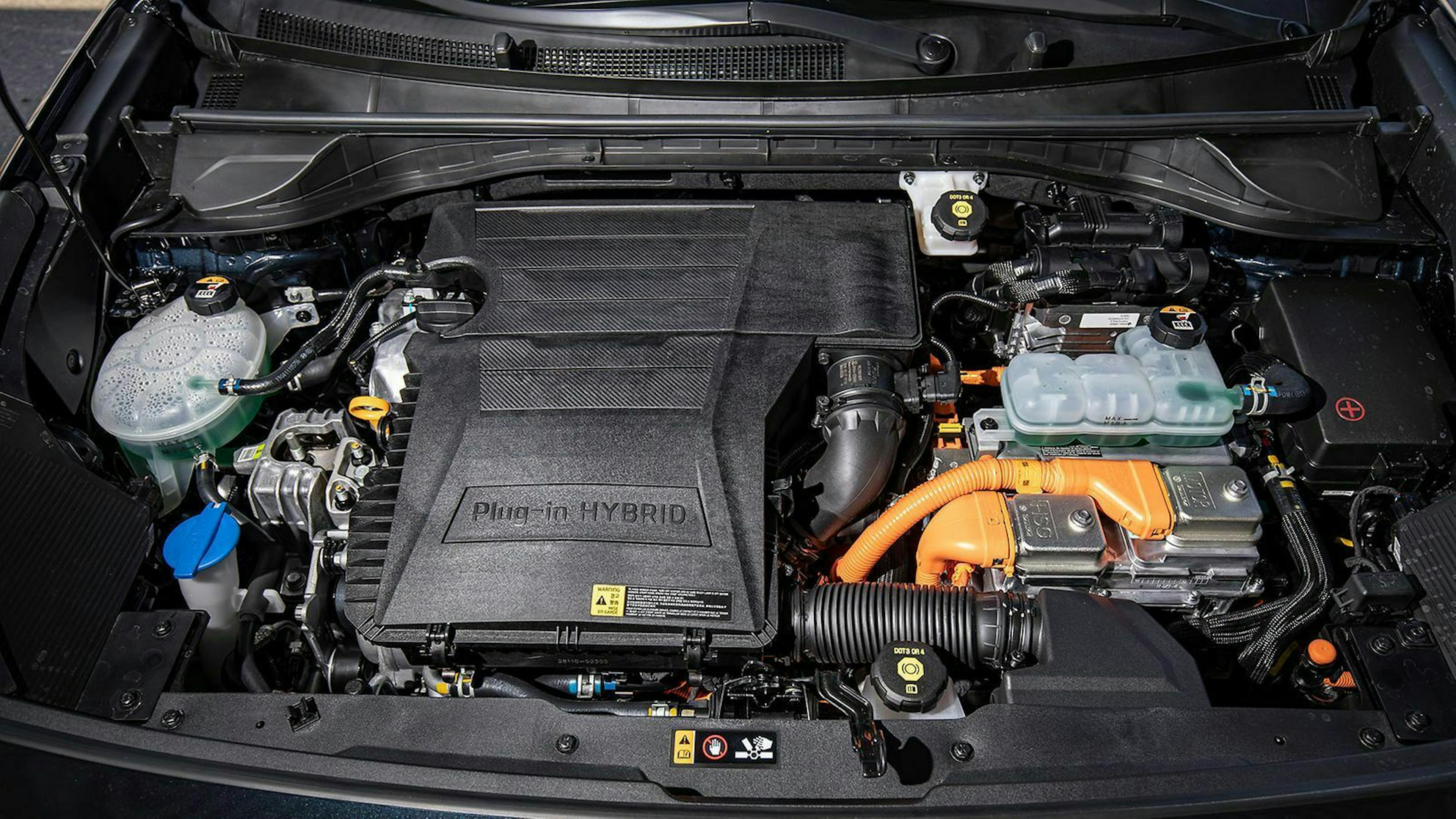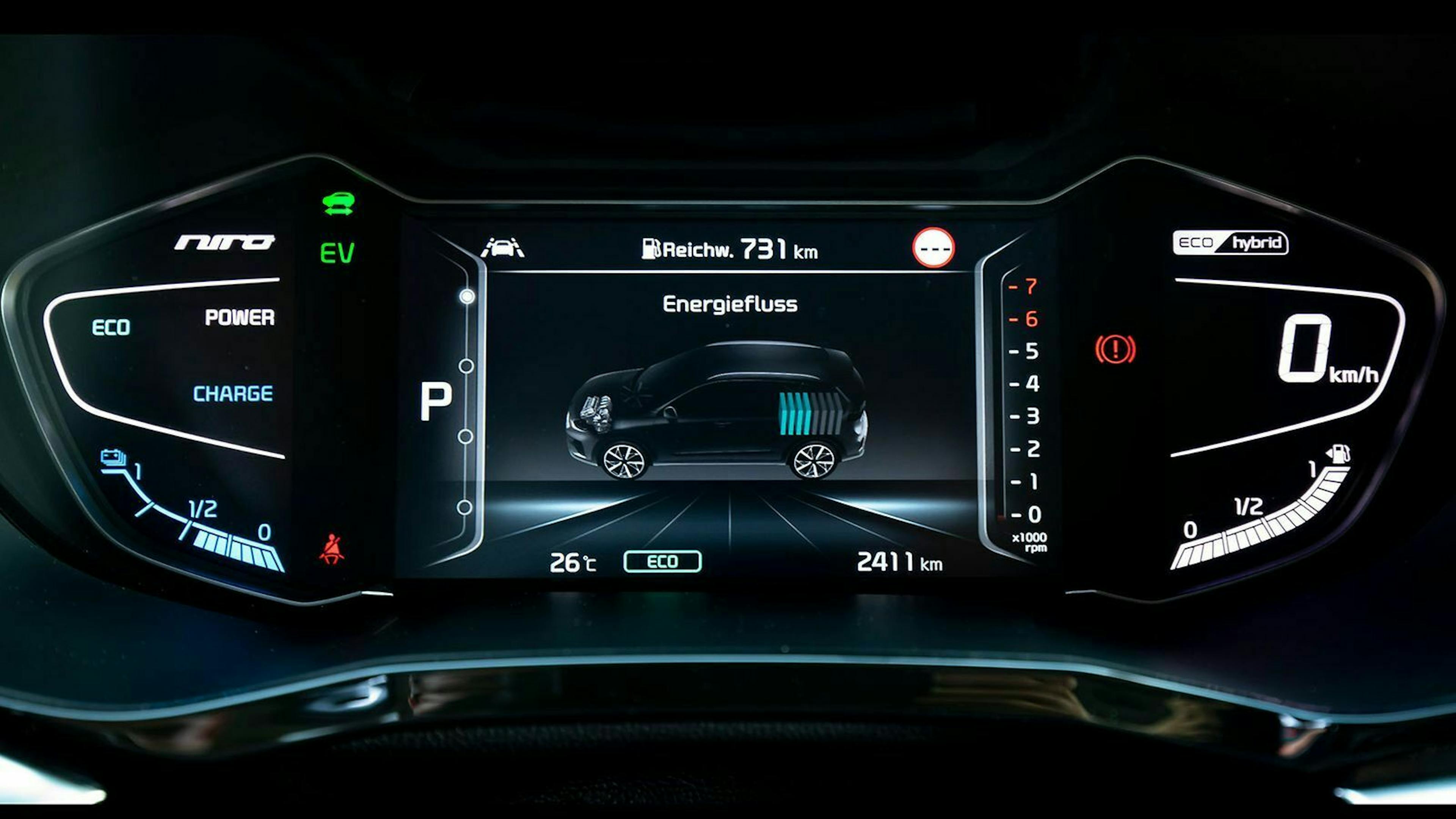Kia Niro Hybrid and Plug-in Hybrid in comparison
Kia's SUV range is somewhat opaque. There are some models in the smaller sizes in particular. The range extends from the Kia Sportage to the Kia Xceed to the Kia Stonic. And somewhere in between, the Kia Niro fits. With a length of 4.36 meters, it towers over the Stonic and lands just behind the Xceed with 4.40 meters. Nevertheless, its task is clearly defined within the brand: it carries exclusively electrified drives.
In addition to the all-electric e-Niro, these are the two hybrid variants. Once with and once without a plug. Both can drive purely electrically, the Niro plug-in hybrid goes further and can be charged at the socket.
Small facelift for Niro Hybrid and Niro Plug-in
Kia refreshed the two models a bit in May 2019. The interior became prettier. With the small facelift, Kia changed the layout and brought a digital instrument panel into the car. On the outside, Kia slightly adjusted the design of the front, changed the design of the daytime running lights and delivers the Niro in the higher equipment with LED headlights. Before that, there were only xenon lamps. More importantly, the infotainment system has been modernized. The largest variant comes with more connectivity and a 10.25-inch screen that is carefully embedded in the high-gloss décor on the dashboard.

For PHEV drivers, the integration of information about charging stations is interesting. In addition, the system, called UVO Connect, serves as an interface for remote services. The vehicle can be monitored via a mobile phone app and – in the case of the PHEV – the charging process including pre-conditioning can be controlled. For the hybrid, the functions are less important.
PHEV with 58 km electric range
The electric motor of the Kia Niro Hybrid has an output of 32 kW (43.5 hp), while the battery stores 1.56 kWh of energy. Electric range is not a decisive factor in the full hybrid. The electric motor is primarily intended to provide support and take over the work when starting off in order to reduce the consumption of the combustion engine. 3.7 liters of Super per 100 kilometers are in the data sheet.

In the PHEV, the electric motor is more powerful, with an output of 44.5 kW (60.5 hp). The battery is larger and stores 8.9 kWh of electricity for 58 kilometres of purely electric range. The standard shows 1.3 liters of consumption. But the value is not very meaningful in practice. More than with other forms of propulsion, the driving profile is decisive. And with it the question of how often it is possible to drive purely electrically and how much the combustion engine has to help out.
By the way, this does not differ between the Niro Hybrid and Niro Plug-in. Both models are powered by a 1.6-liter gasoline engine with 105 hp (77 kW), which burns according to the Atkinson principle. He does his job passably. When driving cautiously, he keeps himself elegantly in the background. It gets louder when pedaled and doesn't necessarily sound nice. But it doesn't matter, the Niro is supposed to save. First up is the full hybrid. It moves pleasantly quietly, especially when starting off, when only the electric motor is pushing. The combustion engine switches on quickly, and the transition is smooth and inconspicuous. Just like in the other direction.
In the test close to the hybrid standard consumption
So you roll gently over the motorway, country road and through villages, over a route that commuters could cover in a similar way. Around 27 kilometres with changing traffic, but without gradients or serious obstructions. In the end, after a good 30 minutes of driving, there is 3.9 liters of consumption in the on-board computer. That's okay. Depending on the equipment, the standard ranges between 3.7 and 4.3 liters. Our Niro rolls on 18-inch wheels, which drive up consumption.

Switching to the plug-in hybrid. In a direct comparison, you can feel the differences. The heavier PHEV (up to 100 kilos more, depending on the equipment) goes to work a little less spontaneously in electric mode, despite the more powerful electric motor. No wonder, the engines are identical, as is the torque of 170 Nm. In the plug-in, the machine can only do more because the battery can deliver more power. And record. In the Niro plug-in hybrid, there is also more recuperation.
Occasionally, the combustion engine also charges with more verve. Then it gets a little louder than in the hybrid and the background noise doesn't quite match the propulsion. But overall, the Niro with a plug drives just as quietly and pleasantly as the one without. You can feel more weight in the steering, but both spring well and roll pleasantly. The system output is also identical at 141 hp each.
The plug-in saves better in the test
We drove off in the plug-in with an empty battery. In other words, the way you shouldn't actually do it. But it certainly can. Because empty never means completely empty. The plug-in then operates like the full hybrid. Temporarily charges the battery, recuperates where it can, and thus enables the electric motor to intervene. It felt like the combustion engine ran almost as often as in the normal hybrid, the electric motor took over more often when starting off, up to 120 km/h on the highway as well. In this respect, both models move very similarly.
And consume a similar amount. After the same 27 kilometers of distance with as identical a drive as possible, 3.6 liters of consumption were shown in the end – surprising. Despite the higher weight, the plug-in drives more economically? Yes and no. It rolls on 16-inch rims as standard, the hybrid on 18-inch wheels. In the data sheet, there is a difference of 14 grams of CO2 or 0.6 liters of fuel. In addition, for the sake of fairness, it must be said that in the plug-in, the desire for more power in the battery often drove us to increase recuperation via the paddles on the steering wheel. This brings a little more than the foot brake.

In any case, the trial shows that the much-maligned PHEVs can be more economical than good diesels, even for those who don't like charging. Within narrow limits, of course. Namely, when the electric motor can help a lot and recuperate properly. In other words, in city or commuter traffic, where there is often acceleration and a lot of braking. On the long distance at a steady pace, on the other hand, the weight will be fully absorbed. There, the PHEV will be the thirstier car. Those who charge regularly and rarely cover distances of more than 100 kilometres between sockets or charging stations drive much more economically with the PHEV. Some owners are even supposed to drive their car like an e-mobile.
Niro Plug-in or Niro Hybrid: a question of profile
It is above all the area of application that should decide whether the full hybrid or the plug-in hybrid is the right choice. If you often drive short distances, travel a lot in the city and have your own charging facility, the PHEV saves a lot of fuel and thus local CO2 emissions. In conjunction with a green electricity contract, also in general.
If you can't regularly use a socket at the carport or in the underground car park, you're better off with the full hybrid. On average, it consumes less than the PHEV with an empty battery. The higher weight is noticeable. And the larger battery shrinks the trunk volume. Instead of 436 liters like the hybrid, the plug-in hybrid loads only 324 liters into the rear.

In addition, the Niro plug-in costs more to buy. Kia charges at least 33,990 euros, minus the state electric bonus of 2,000 euros. The Niro Hybrid is significantly cheaper at 26,990 euros. For company car drivers, however, the price is put into perspective because the state only taxes 0.5 percent of the new car value for PHEVs and electric cars.
Kia calculates an annual tax saving of 1,043 euros with a distance of 17 kilometers to the workplace and a tax rate of 30 percent. Driving a PHEV can therefore be worthwhile. If you know how to drive.
Kia Niro Hybrid and Kia Niro Plug-in Hybrid: Technical Specifications
| Model | Kia Niro Hybrid | Kia Niro Plug-in-Hybrid |
|---|---|---|
| Engine | 1.6-litre four-cylinder naturally aspirated petrol engine, Atkinson cycle | 1.6-litre four-cylinder naturally aspirated petrol engine, Atkinson cycle |
| Achievement | 105 PS (77 kW) b. 5.700 U/min | 105 PS (77 kW) b. 5.700 U/min |
| Torque | 147 Nm b. 4.000 U/min | 147 Nm b. 4.000 U/min |
| Electric motor | Permanentmagnet-Synchronmotor | Permanentmagnet-Synchronmotor |
| Achievement | 32 kW (43,5 PS) b. 1.798-2.500 U/min | 44,5 kW (60,5 PS) b. 1.798-2.500 U/min |
| Torque | 170 Nm b. 0-1.798 U/min | 170 Nm b. 0-1.798 U/min |
| Performance | 141 PS (104 kW) b. 5.700 U/min | 141 PS (104 kW) b. 5.700 U/min |
| System Torque | 265 Nm b. 1.000-2.400 U/min | 265 Nm b. 1.000-2.400 U/min |
| Drive | 6-speed dual clutch, front wheels | 6-speed dual clutch, front wheels |
| 0-100 km/h | 11,5 s | 10,8 s |
| Velocity | 162 km/h | 172 km/h |
| Consumption | 4.3/3.7 l/100 km (18-/16-inch rims) | 1,3 l/100 km, 10,5 kWh/km |
| CO2 emissions | 100/86 g/km | 29 g/km |
| Akkukapazität | 1.56 kWh | 8.9 kWh |
| Electr. Reach | - | 58 km (NEFZ) |
| Length/width/height (mm) | 4.355/1.805/1.535 | 4.355/1.805/1.535 |
| Wheelbase | 2.700 mm | 2.700 mm |
| Weight | 1.490-1.594 kg | 1.594-1.651 kg |
| Trunk volume | 436-1.434 l | 324-1.322 l |
| Towing capacity | 1,300 kg | 1,300 kg |
| Price | from 26.990 Euro | from 33.990 Euro |
Kia Niro HEV vs PHEV and Bildern
